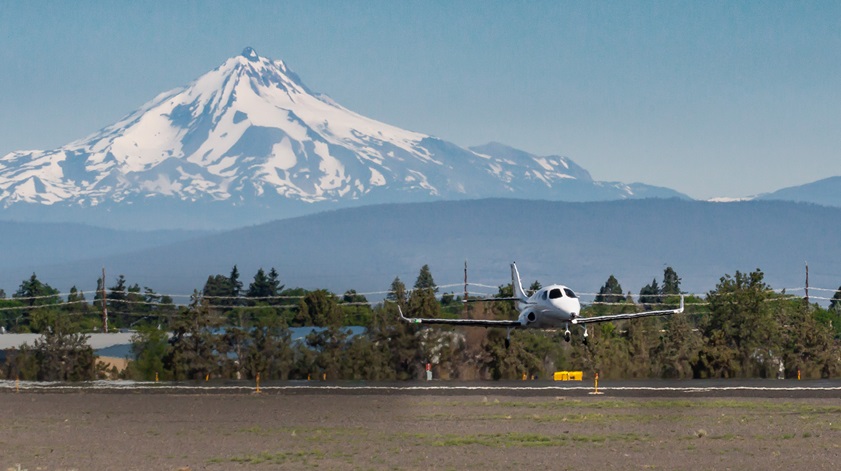Lighter, longer Stratos logs first flight
Oregon firm puts kit jet to test
The Stratos 716X made its maiden flight July 2 following a “complete redesign” that added two seats and shaved hundreds of pounds of weight from its four-seat predecessor.
Stratos Aircraft Chief Technical Officer Carsten Sundin said stretching the cabin of the Stratos 714, the company’s first prototype that made its maiden flight in 2016, was more complicated than one might think. The Stratos 714 debuted at EAA AirVenture in Oshkosh, Wisconsin, in 2017, and potential customers told the company they wanted more seats, legroom, and payload. Those conversations led to the 716X, which can be configured with up to six seats.
“We knew we wanted to make it into a true, comfortable six-seater,” Sundin said in a July 7 telephone interview. “After long study, we added 31 inches to the pressure vessel, and we extended the tail arm 16 inches. That gave us the stability that we needed.”
Sundin said the 716X will be able to fly on full tanks with at least five people and their luggage, thanks to a rigorous weight reduction effort.
“Every single part was revisited for weight savings,” Sundin said. “We made the aircraft bigger, but we also got hundreds of pounds out of it. It was really a complete redesign.”
The Stratos 716X has a modern glass cockpit built around dual Garmin G3X displays, a GTN 750 multifunction display, integrated Garmin autopilot, dual standby attitude indicators, a fully automated pressurization system, and sidestick controls.
Sundin said the Stratos 714 will continue to fly, along with the 716X, as the company advances its effort to eventually certify the Stratos 716, which will be the factory-built version of the 716X once it is certified. The kit version will be sold with a robust builder assistance program at the company’s Redmond, Oregon, headquarters. Sundin said a limited number of 716X kits will be sold to select customers, with a $2.5 million price tag expected. The certified version, still years away, will likely retail for around $3.5 million.
“The reason we’re doing kits is, we see it as a logical step toward certification,” Sundin said, noting that the 716X had a full data-acquisition system aboard. Starting with kits “allows a great opportunity to refine the product and the manufacturing techniques.”
Sundin said the July 2 maiden flight “went like clockwork,” and there were no surprises. While the unnamed first customer gets to keep the aircraft in the end, “we will be using this airframe for flight testing for some time to come.”
The factory now features state-of-the-art equipment to build the carbon fiber airframe and other components, including laser projectors to aid the alignment of parts. The carbon fiber parts are cured in a large “walk-in” oven, and the factory is also equipped with a gantry router, 3D printer, waterjet cutter, and CNC machines.
“The company has evolved,” Sundin said. “We have so much more in place, now.”





